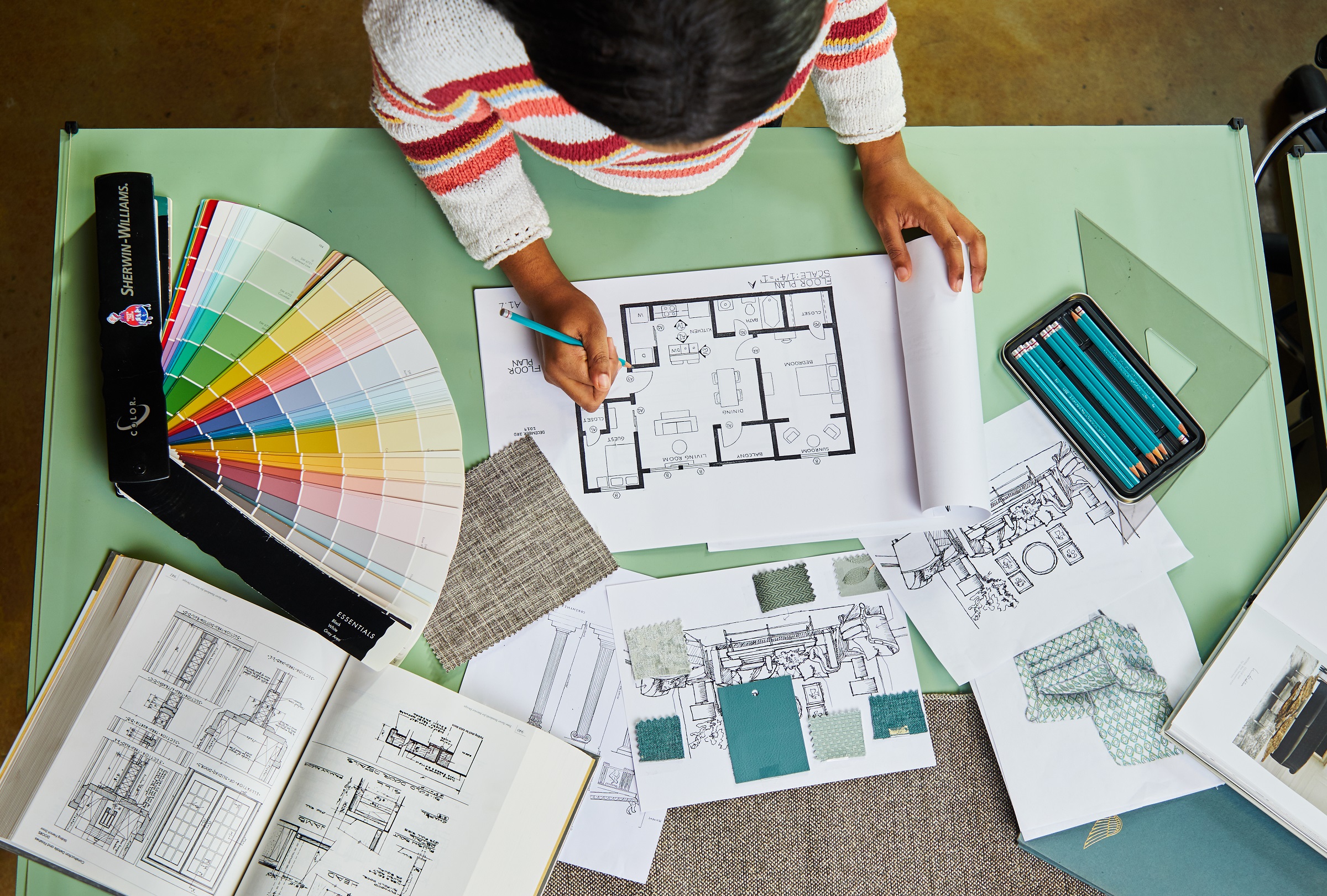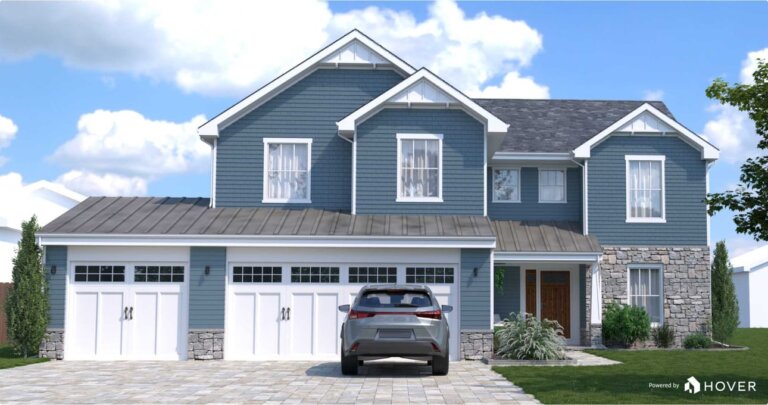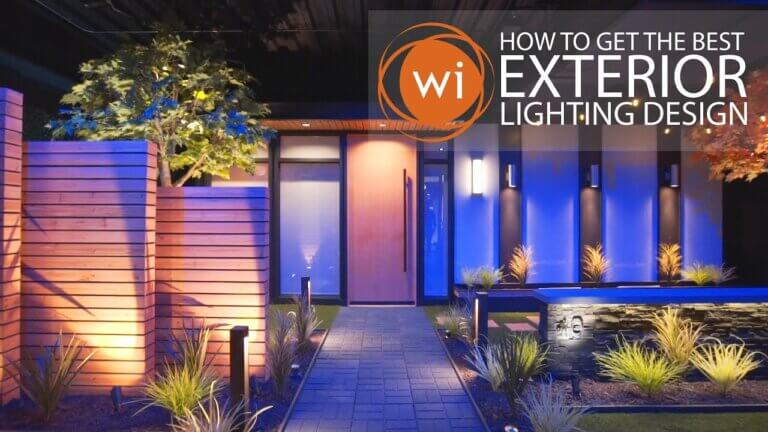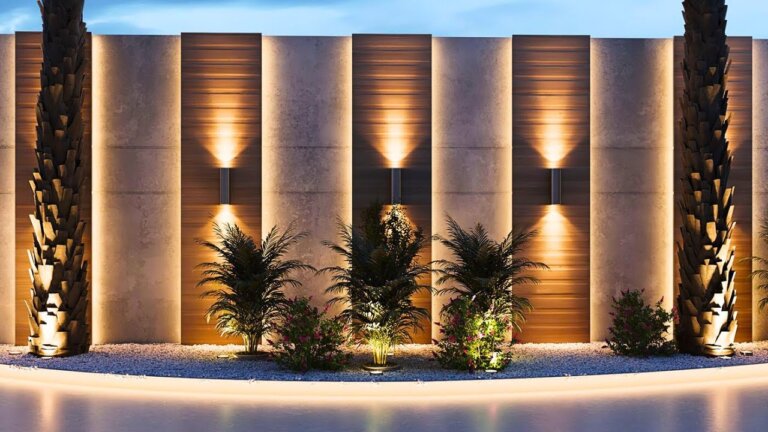An interior design degree opens many doors. It offers various career paths.
Interior design is more than decorating spaces. It’s about creating functional, aesthetically pleasing environments. With an interior design degree, you can pursue diverse roles in the industry. From residential to commercial projects, each offers unique challenges and rewards. This degree equips you with essential skills like space planning, color theory, and material knowledge.
You can work in design firms, start your own business, or even venture into related fields like furniture design or event planning. The possibilities are vast. Read on to discover exciting career options you can explore with your interior design degree.

Credit: www.aacc.edu
What Can You Do With an Interior Design Degree in 2025?
Earning an interior design degree in 2025 opens a world of creative design careers across various industries. Whether you’re interested in transforming living spaces, designing commercial interiors, or working in entertainment, there are numerous jobs with an interior design degree that offer both fulfillment and growth.
This versatile qualification equips you with technical, artistic, and project management skills highly valued in today’s job market, making it easier to pursue diverse interior design career paths.
Top Careers in Interior Design: 2025 Job Opportunities & Salaries
Explore these leading interior design job opportunities and discover potential earnings for each role:
| Career Path | Role & Description | Interior Design Salary 2025 (USD) |
|---|---|---|
| Interior & Spatial Designer | Plan and design functional, beautiful spaces for homes, offices, and public venues. | $67,400 |
| Exhibition Designer | Create engaging displays for museums, galleries, and trade shows. | $56,000 |
| Production Designer (TV/Film) | Design sets and visual environments for film, TV, and theater. | $56,442 |
| Furniture Designer | Design and prototype furniture for commercial or residential use. | $68,890 |
| Architectural Technologist | Collaborate with architects on building plans and technical drawings. | $62,000 |
| Visual Merchandiser | Design retail displays to attract customers and boost sales. | $51,000 |
| Graphic Designer | Create visual concepts for branding, marketing, and digital media. | $57,990 |
| Product Designer | Develop concepts for consumer goods, from appliances to décor. | $68,890 |
| Stylist / Concept Artist | Style interiors, sets, or products for photo shoots and brands. | $54,000 |
| Retail Merchandiser / Sales | Plan product layouts and sales strategies for retail environments. | $28,000–$35,000 |
| Event / Wedding Planner | Design and coordinate events with a focus on décor and guest experience. | $63,155 |
| Professional Organizer | Help clients optimize and beautify home or office spaces. | $49,000 |
| Interior Design Educator | Teach design principles and mentor future interior designers. | $65,000 |
Where Can You Work With an Interior Design Degree?
Graduates can find interior design job opportunities in a variety of settings, such as:
- Residential and commercial interior design firms
- Architecture and engineering companies
- Retail and merchandising businesses
- Film, TV, and entertainment studios
- Furniture and product design studios
- Event planning and hospitality companies
- Education and training institutions
Recent data shows that 77.6% of interior design graduates are employed within 15 months, with nearly half working in art, design, and media roles.
Essential Skills for Interior Designers: What You’ll Learn
An interior design degree provides a blend of creative and technical abilities that are in high demand. Key skills for interior designers include:
- Creativity & Visualization: Turning ideas into compelling design concepts
- Technical Proficiency: Using CAD, 3D modeling, and design software
- Space Planning: Optimizing layouts for function and style
- Project Management: Managing budgets, timelines, and teams
- Communication: Collaborating with clients and contractors
- Knowledge of Materials & Sustainability: Choosing finishes and eco-friendly options
- Attention to Detail: Ensuring quality and cohesion in every project
These skills for interior designers make graduates highly employable in a range of creative design careers, from kitchen and bath design to commercial architecture and retail branding.
Launch Your Creative Design Career With an Interior Design Degree
If you’re wondering what you can do with an interior design degree, the answer is: almost anything in the world of design! With the right mix of creativity, technical knowledge, and project management, you’ll be ready to explore a variety of interior design career paths and thrive in today’s competitive job market.
Residential Design
An interior design degree helps you design beautiful homes. You can work with families to create comfortable living spaces. Each room can be customized to fit their needs. Bedrooms, kitchens, and living rooms can all be unique. You can choose colors, furniture, and even lighting.
Designing apartments and condos is also an option. You can make small spaces feel cozy and stylish. Storage solutions are important here. You can use clever designs to make the most of the space. Choose multi-functional furniture to save space. Apartments and condos can be both functional and beautiful.
Commercial Design
Designing office spaces is a key role for interior designers. They create functional and aesthetic work environments. Good design can boost employee productivity and well-being. Designers plan layouts, choose furniture, and select colors. They ensure spaces are comfortable and efficient. Safety and accessibility are also important. They follow building codes and regulations. Working with clients, they understand needs and preferences. Interior designers make offices both stylish and practical.
Retail environments are another focus for interior designers. They design stores to attract customers and enhance the shopping experience. Layouts guide customers through the space. Designers use lighting, colors, and displays to highlight products. The goal is to make shopping easy and enjoyable. Brand identity is important too. Designers ensure the store reflects the brand’s image. They also consider traffic flow and safety. Retail spaces need to be inviting and functional.
Hospitality Design
Interior designers play a key role in hotel and resort design. They create welcoming spaces for guests. Every detail matters. Designers choose furniture, colors, and lighting. They make sure each room feels comfortable. Lobby areas must be inviting. Guest rooms should be cozy. Designers often work with architects. Together, they plan beautiful and functional spaces.
Designers also shape restaurants and cafes. They design dining areas that are both stylish and practical. Seating arrangements must be comfortable. Lighting sets the mood. The right decor creates a unique atmosphere. Designers ensure the kitchen layout is efficient. They balance aesthetics and functionality. Good design can enhance the dining experience. It keeps customers coming back.
Exhibition Design
Trade shows need creative setups to attract visitors. As an interior designer, you can plan booths. Make them look appealing. Use lighting, colors, and space wisely. Each booth should tell a story. Your goal is to catch the eye of every passerby. A well-designed booth draws more people in. This can lead to more business for your client.
Museums and galleries require organized spaces. Your job is to display items in an engaging way. Use light to highlight key pieces. Arrange items so visitors can move easily. Each exhibit should be clear and informative. Good design helps visitors learn and enjoy. Your work makes the experience memorable. This can increase visitor numbers over time.
Sustainable Design
Using eco-friendly materials helps the environment. Bamboo is a great choice. It grows fast and is strong. Recycled glass is another option. It can be used in many ways. Cork is a good choice too. It is soft and comes from trees.
Energy-efficient solutions save power. LED lights use less energy. They last longer too. Solar panels are another option. They turn sunlight into power. Smart thermostats help control heat. They save energy and money.

Credit: planner5d.com
Set Design
Using an interior design degree, you can create film and TV sets. Design the spaces where actors work. Make sure every detail fits the story. From the furniture to the colors, everything matters. You work with directors and producers. Together, you make the scene look real. Your designs can make the audience feel happy, sad, or scared. Every scene needs a special touch. Your skills bring the director’s vision to life.
In theater, you design stage sets. Each play needs a unique look. Your job is to make this happen. Work closely with the director. Ensure the set matches the play’s theme. Choose props that tell a story. Set design is key. It helps actors perform better. It makes the audience feel part of the story. Your work can change the mood of a scene. It brings the script to life.
Product Design
Creating furniture involves much thought. You can craft unique pieces. Each item needs to be both functional and stylish. Think about comfort too. Clients want pieces that fit their space. Consider materials and colors. They should match the home’s theme. Durability is key. Well-made furniture lasts longer. This skill is in high demand.
Lighting affects a room’s feel. A good designer knows this. You can create custom lighting. Think about brightness. Different tasks need different light levels. Choose fixtures that fit the decor. Consider energy efficiency. LED lights are popular. They save money and last longer. Proper lighting makes spaces welcoming. It’s a crucial skill in design.
Freelancing
With an interior design degree, you can take on independent projects. Many clients need help with their homes or offices. You can create designs and plans for them. This gives you the freedom to choose your projects. You can work on small or big spaces. It’s your choice.
Offering consultancy services is another option. Many people need advice on colors, furniture, and layouts. You can guide them. This helps them make the best choices. It’s a great way to share your knowledge. Clients will trust your expertise.

Credit: www.liberty.edu
Frequently Asked Questions
What Jobs Can I Get With An Interior Design Degree?
With an interior design degree, you can become an interior designer, space planner, or furniture designer. Other options include roles in set design, exhibition design, and retail design.
Is An Interior Design Degree Worth It?
Yes, an interior design degree is worth it. It opens doors to diverse career opportunities in creative industries. You’ll gain skills in design, project management, and client relations.
Can I Work For Myself With This Degree?
Yes, you can work for yourself with an interior design degree. Many interior designers become self-employed, offering freelance design services or starting their own design firms.
What Skills Will I Learn In This Degree?
In an interior design degree, you’ll learn space planning, color theory, and 3D modeling. You’ll also gain skills in project management, client communication, and design software.
Conclusion
An interior design degree offers diverse career paths. You can become a residential or commercial designer. Other options include set design, furniture design, or even teaching. Many graduates start their own design firms. The skills you gain are versatile. They apply to many industries.
Your creativity can shine in various roles. The interior design field is both rewarding and growing. So, take advantage of your degree. Explore the many opportunities available. Your future in interior design is bright and full of potential.

My name is Mahi Uddin, and I’m a blog writer with over two years of experience specializing in creating engaging, informative content using AI tools. I contribute to InExDecor.com, where I share creative ideas and practical tips for transforming interior and exterior spaces into beautiful, functional environments. With a passion for storytelling and a knack for blending creativity with technology, I strive to craft blogs that not only inform but also inspire readers. When I’m not writing, you can find me exploring design trends or enjoying a good book with a cup of coffee.








